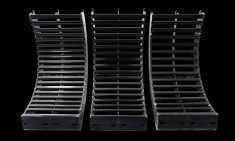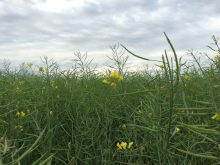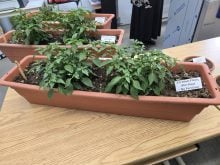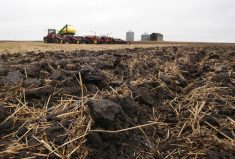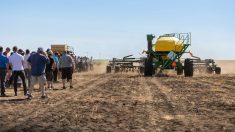Manitoba already has a provincial bird, the great grey owl.
Our provincial flower is the prairie crocus.
Soon we’ll have an official provincial soil too – Newdale.
To the layman, Newdale is that nice black earth that grows really nice crops found around Brandon up to the Riding Mountains. Unlike the other Class 2 contender, the clay-based Red River soil, it retains moisture well, but doesn’t get too mucky in the spring.
To the soil scientist, Newdale is one name for orthic black chernozem solum on moderately to strongly calcareous, loamy morainal till of limestone, granitic and shale origin that formed under grassland or aspen grove vegetation that is well to moderately drained, on mid to upper slopes of undulating or hummocky landscapes.
Read Also

Local farm businesses, groups look forward to Manitoba Ag Days 2026
Most of agriculture is seemingly at Manitoba Ag Days each January: Manitoba agribusinesses and farm groups look forward to connecting with farmers at the 2026 show.
Wally Fraser, a soil scientist from Agriculture and Agri-Food Canada, who led this year’s Manitoba Soil Conservation Council of Canada tour to peer into the trench dug into the Manitoba Zero Tillage Research Association farm’s Newdale soil, said that designating a provincial soil will help the public to become more aware of the need to protect a resource of critical importance.
“It increases the public’s knowledge, and just thinking about soils as an important resource that has to be maintained and preserved. Civilizations are based on having good, productive soils, ultimately,” said Fraser.
The trench dug to expose the soil profile at the MZTRA research farm showed a distinctively thinning band of black earth from the top of the slope down to a small pothole, he noted.
“The soils were a lot thinner at the crest, and it may be that they weren’t that thick in the first place,” he said. “But the other explanation is that it’s because of water or tillage erosion over a hundred years.”
The provincial soil designation has already passed first reading in the legislature, which is the first step in catching up with a good proportion of the rest of North America in this respect.
Already, all the states south of the border have their own state soil, as do the provinces Quebec, Alberta, Nova Scotia, New Brunswick and Prince Edward Island.
Newdale, rated a Class 2 soil for its “breadbasket” nature, or high productivity, has no salinity or excessive stoniness problems, and was chosen because it covers a wide area of Manitoba. A similar black chernozem also covers parts of Western Canada in a band that extends to Edmonton, but over that distance, the soil composition changes slightly and the names are different.
There is better dirt, the Class 1 soil west of Portage la Prairie, but it is limited in area, and so was not chosen for the provincial top honour, said Fraser.
Newdale soil is black due to its high organic carbon composition and higher annual precipitation rates, which came about during thousands of years of tall grass prairie organic matter repeatedly growing, dying back in fall, then breaking down to build the soil’s organic matter content.
The dark-brown soil of the Palliser triangle, on the other hand, was derived from shorter grasses under lower rainfall. [email protected]


